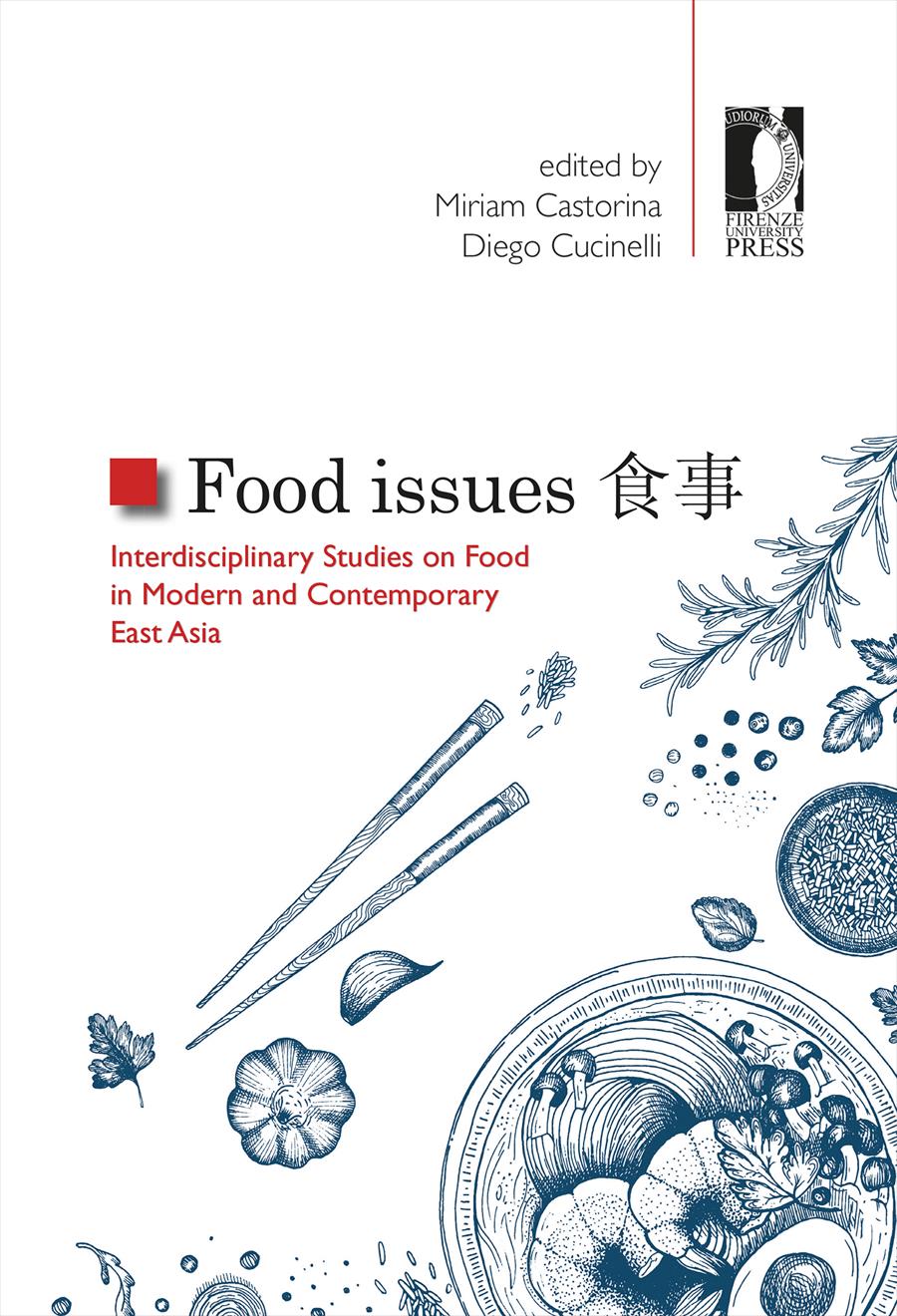- Food issues 食事
- Edited by Miriam Castorina, Diego Cucinelli
作品 『壁』における の表象 - 安 公房はその文学に をどう描いたか / Representation of food in the collection of works Kabe: How Abe Kōbō wrote about food in the literature
- Yuki Sasaki
- © 2021 Author(s) |
- CC BY 4.0
- DOI: 10.36253/978-88-5518-506-6.05
This paper aims to examine the way "food" is depicted in “Kabe (The Wall)” (1951) written by Abe Kōbō. “Kabe” is Abe's first collection of works, and it consists of three parts: “S.Karuma-shi no Hanzai (The Crime of S. Karma)” (1951), “Akai Mayu (The Red Cocoon)” (1950), and six other works. Based on discussions in previous studies, I first aimed to clarify where Abe's "consistent intention" in his "Postscript" can be found from the perspective of quantitative text analysis using KH Coder. Then, I chose "food" as one of the indicators to support the worldbuilding and the actions of the characters in the work. I pointed out that the variety of both food and drink is limited, also there are no significant descriptions of taste, and that it can be inferred that what people eat is divided according to their positions in the story. In “Kabe”, the description of "food" is used as a trigger for the characters to move on to the next action.
- Keywords:
- Abe Kōbō,
- “Kabe”,
- quantitative text analysis,
Kyoto University, Japan
- 李貞熙「「影」をくわえて逃げ去る「狸」―安部公房の『バベルの塔の狸』論―」『文学研究論集』(1996・3)127–42頁
- 石橋紀俊「安部公房『壁―S・カルマ氏の犯罪」論―自我・変身・言葉―」『昭和文学研究』(1998・2)102–12頁
- 石原千秋「安部公房『壁―S・カルマ氏の犯罪―』―<パパ>の崩壊」『国文学』(1988・3)80–3頁
- 呉美姃『安部公房の<戦後>:植民地経験と初期テクストをめぐって』(クレイン、2009)
- 荻正「安部公房「S・カルマ氏の犯罪」におけるキャロル、カフカ―裁判について―」『国語国文学研究』(1997・12)88–96頁
- 斎藤朋誉「<変貌>の臨界点―安部公房『壁』序論」『國學院大學大学院紀要 文学研究科』(2018・2)187–205頁
- 鈴木登美・十重田裕一・堀ひかり・宗像和重『検閲・メディア・文学:江戸から戦後まで』(新曜社、2012)
- 田中裕之「安部公房『赤い繭』論」『近代文学試論』(1989・12)15–27頁
- 田中裕之「『S・カルマ氏の犯罪』論―作家誕生の物語―」『近代文学試論』(1990・12)30–43頁
- 田中裕之「安部公房とシャミッソー」『梅花女子大学文学部紀要』比較文化編(1999・12)1–16頁
- 谷真介[編]『安部公房評伝年譜』(新泉社、2002年)
- 鳥羽耕史[編]『安部公房 メディアの越境者』(森話社、2013)
- 胸組芙佐子「安部公房「洪水」論―人間液化とその寓意」『稿本近代文学』(2016・3)146–56頁
- 小川直之[編]『日本の食文化3 麦・雑穀と芋』(吉川弘文館、2019)
- 大本泉『名作の食卓 : 文学に見る食文化』(角川書店、2005)
Chapter Information
Chapter Title
作品 『壁』における の表象 - 安 公房はその文学に をどう描いたか / Representation of food in the collection of works Kabe: How Abe Kōbō wrote about food in the literature
Authors
Yuki Sasaki
Language
English
DOI
10.36253/978-88-5518-506-6.05
Peer Reviewed
Publication Year
2021
Copyright Information
© 2021 Author(s)
Content License
Metadata License
Bibliographic Information
Book Title
Food issues 食事
Book Subtitle
Interdisciplinary Studies on Food in Modern and Contemporary East Asia
Editors
Miriam Castorina, Diego Cucinelli
Peer Reviewed
Number of Pages
202
Publication Year
2021
Copyright Information
© 2021 Author(s)
Content License
Metadata License
Publisher Name
Firenze University Press
DOI
10.36253/978-88-5518-506-6
ISBN Print
978-88-5518-505-9
eISBN (pdf)
978-88-5518-506-6
eISBN (epub)
978-88-5518-507-3
Series Title
Studi e saggi
Series ISSN
2704-6478
Series E-ISSN
2704-5919
